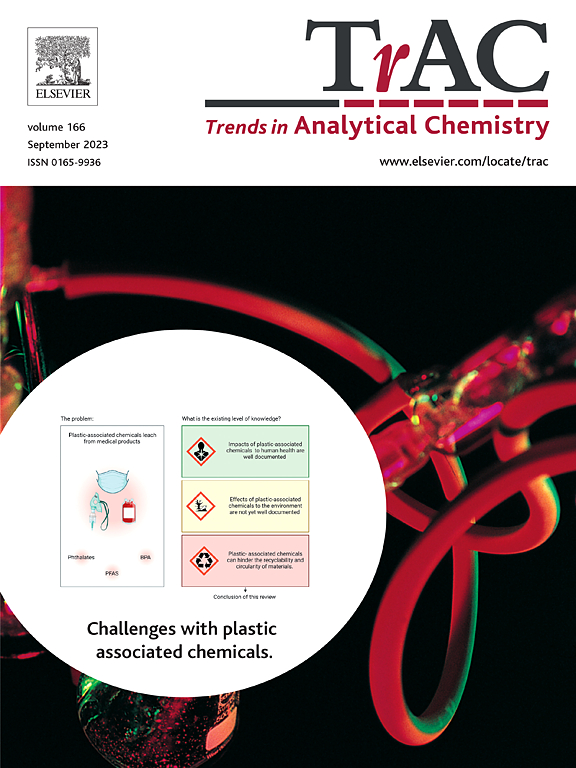One class classification (class modelling): State of the art and perspectives
IF 11.8
1区 化学
Q1 CHEMISTRY, ANALYTICAL
引用次数: 0
Abstract
Classification, i.e., the prediction of one or more qualitative attributes of samples based on the measured data, is ubiquitous in chemistry, and, more specifically, in analytical chemistry. Among the possible classification strategies, class modelling techniques, which aim at describing one category at a time, present several advantages over discriminant ones, especially when dealing with asymmetric problems featuring one category of interest being well characterized and representatively sampled and another (made of everything that is not belonging to the first specific group) being under-represented by definition and highly heterogeneous.
In this review, the fundamentals of class modelling are illustrated, together with an overview of the main techniques of this kind proposed in the literature, namely Soft Independent Modelling of Class Analogy (SIMCA), Unequal Class Spaces (UNEQ), Potential Functions (PF), Partial Least Squares (PLS)-based algorithms, One Class-Support Vector Machines (OC-SVM) or Neural Networks (NN)-based strategies.
求助全文
约1分钟内获得全文
求助全文
来源期刊

Trends in Analytical Chemistry
化学-分析化学
CiteScore
20.00
自引率
4.60%
发文量
257
审稿时长
3.4 months
期刊介绍:
TrAC publishes succinct and critical overviews of recent advancements in analytical chemistry, designed to assist analytical chemists and other users of analytical techniques. These reviews offer excellent, up-to-date, and timely coverage of various topics within analytical chemistry. Encompassing areas such as analytical instrumentation, biomedical analysis, biomolecular analysis, biosensors, chemical analysis, chemometrics, clinical chemistry, drug discovery, environmental analysis and monitoring, food analysis, forensic science, laboratory automation, materials science, metabolomics, pesticide-residue analysis, pharmaceutical analysis, proteomics, surface science, and water analysis and monitoring, these critical reviews provide comprehensive insights for practitioners in the field.
 求助内容:
求助内容: 应助结果提醒方式:
应助结果提醒方式:


